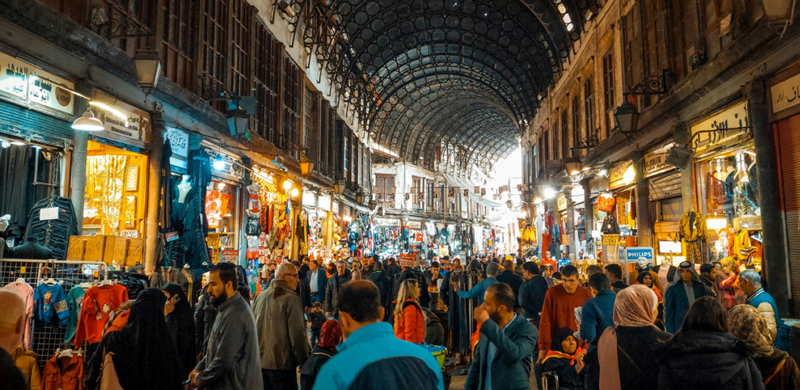
Damascus, the capital of Syria, is a city that resonates with history. Fabled as one of the world’s oldest continuously inhabited cities, its ancient streets have witnessed the rise and fall of empires. Following over a decade of devastating conflict, a fragile stability has returned to government-held areas, including the capital.
Now, the Syrian government, in collaboration with select private sector allies, is embarking on an ambitious and fraught endeavor: resurrecting a tourism industry from the ashes. This strategy is seen as a potential lifeline for a shattered economy, but the path forward is exceptionally complex.
The Strategy and The Key Players
The drive to revive tourism is being led by a coalition of state and semi-private entities. The Syrian Ministry of Tourism has been the most vocal proponent, launching initiatives to promote domestic tourism and, tentatively, attract visitors from allied nations.
They have focused on rehabilitating key historical sites in Damascus, such as the iconic Umayyad Mosque, which has undergone restoration, and the ancient Souq al-Hamidiyah, which remains a bustling, if less crowded, center of commerce.
Alongside the government, a handful of resilient local business figures and diaspora investors are making calculated bets. This has primarily taken the form of investing in the refurbishment of key hotels in Damascus, such as the famous Four Seasons Hotel Damascus, which reopened in 2022 after significant renovations, positioning itself to host diplomatic delegations,
international journalists, and the few business travelers who venture in. The Syrian Arab Airlines has also slowly restarted flights to a limited number of regional destinations, reconnecting Damascus to hubs like Dubai, Cairo, and Muscat.
The Prospective Traveler and Investment Landscape
In the immediate future, the target demographic is clear and narrow. The government is not marketing to Western backpackers or mainstream holidaymakers. Instead, the focus is on two primary groups:
- The Syrian Diaspora: Millions of Syrians living abroad, particularly in the Gulf, Europe, and North America, represent the most significant and immediate market. Travel for family visits, cultural connection, and investment exploration offers the most substantial short-term inflow. Their travel is
often driven by emotional ties and a desire to contribute to recovery.
2. Regional Tourists from Allied States: Tourists from countries that maintained diplomatic relations with Syria and have a cultural or religious affinity, such as Iran, Russia, and certain Gulf states, are a key target.
Religious pilgrimage, particularly to Shia sites like the Sayyidah Zaynab Mosque south of Damascus, is a major driver for this segment.
The investment opportunities, while high-risk, are potentially high-reward for those with deep regional expertise and a long-term horizon. They currently exist in specific niches:
- Hotel Refurbishment and Management: Upgrading existing hotel infrastructure to international standards.
- Logistics and Tour Operations: Establishing travel agencies, tour guide services, and transport companies catering to the specific needs of these niche tourist groups.
- Artisanal and Retail Revival: Investing in the crafts and trades that define Damascus, such as textile manufacturing (brocade), traditional soap making, and other goods sold in the historic souqs.
The Immense Challenges
The challenges to this vision cannot be understated.
- Safety and Perception: While Damascus is considered relatively stable, the country remains fragmented, and security incidents occur. The international travel advisory status for Syria remains at the highest warning level for most Western governments, effectively banning tourism from those markets.
- Infrastructure Decay: Beyond the iconic sites, the country’s broader infrastructure – from electricity and water to roads and telecommunications – has been severely degraded, impacting the quality of a tourist’s experience.
- Political and Economic Instability: The Syrian pound is highly volatile, and the country’s political future remains uncertain, creating a precarious environment for any long-term capital commitment.
The Role for Regional Family Offices
For international family offices, the Syrian market was largely off-limits due to previous sanctions and extreme risk.
And for regional family offices based in the Middle East – particularly in Gulf states that have re-engaged with Damascus – a more nuanced opportunity also exists.
These offices, with their deep cultural understanding, long-term investment horizons, and political connections, are potentially among the few entities that could navigate this landscape.
Their most plausible role would not be in direct, high-profile tourism projects but in supporting the underlying ecosystem. This could involve:
- Diaspora-Linked Investment: Facilitating and structuring investments for Syrian diaspora clients looking to rebuild their heritage, potentially through private equity-style funds focused on small and medium enterprises (SMEs) in the hospitality and artisan sectors.
- Philanthropic-Investment Hybrids: Funding restoration projects for historical sites as a form of cultural philanthropy, which also serves to rebuild the essential “product” that the tourism industry relies upon.
- Supply Chain Investments: Investing in businesses that support the tourism and hospitality sector, such as agricultural projects to supply hotels with local produce, which may carry a lower political profile than direct tourism assets.
Damascus’s quest to rebuild its tourism industry is a story of immense ambition facing overwhelming odds. The immediate future will be defined by a narrow focus on diaspora and regional visitors, with investment opportunities confined to a small group of actors able to navigate the complex political and financial constraints.
While a return to Syria’s status as a global tourist destination is a distant prospect, the initial steps towards rebuilding its economy through this lens are undeniably underway.
For the savvy and risk-tolerant regional investor, it represents one of the world’s most challenging – and potentially transformative – frontiers.
